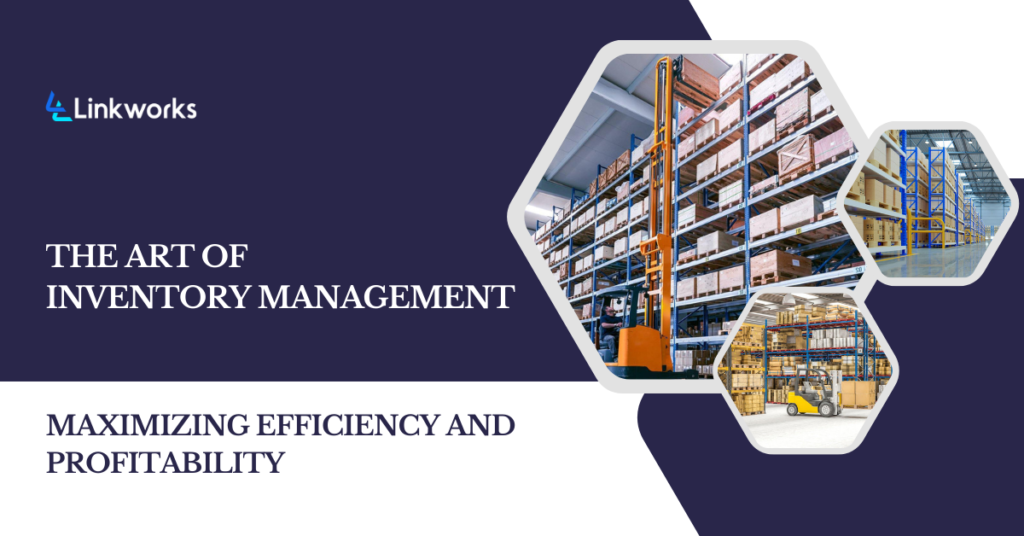
Introduction
Let’s enter the realm of optimized inventory!
Inventory Management plays a significant role in the success of any business. It involves effectively controlling and organizing the flow of goods, ensuring that the right products are available at the right time while minimizing costs and optimizing profitability.
Just like the skilled conductor brings together different musical instruments to create harmonious symphonies, successful inventory management involves the deliberate and strategic handling of goods and materials to optimize processes, reduce costs, and meet customer demands.
In this blog, we’ll reveal how they can harness its power for maximum efficiency and profitability
Why is inventory management important?
Inventory management is important for several reasons. First, it can help businesses to meet customer demand. Customers expect to be able to purchase the products they want when they want them. If a business does not have enough stock on hand, it may lose customers to competitors.
Second, inventory management can help businesses to reduce costs. Holding too much inventory can be expensive, as businesses must pay for storage, insurance, and other costs. Additionally, excess inventory can become obsolete and lose value over time.
Third, inventory management can help businesses to improve efficiency. By streamlining the inventory management process, businesses can reduce waste and improve productivity.
Foundation of Inventory Management
To build a solid foundation in Inventory Management, it is essential to understand the different types and classifications of inventory.
Raw Materials
Raw materials form the backbone of any production process. Effective management of raw materials ensures a seamless production process, avoiding delays and disruptions. By accurately forecasting production needs and maintaining optimal stock levels of raw materials, businesses can reduce the risk of running out of crucial components, preventing costly production delays.
Work-in-Progress
Work-in-progress (WIP) inventory refers to partially completed products that are still undergoing the manufacturing process. It represents the investment of labor, time, and resources.
With too much work in progress, businesses tie up valuable resources, leading to increased carrying costs. On the other hand, insufficient work-in-progress inventory can cause production bottlenecks and delays.
By closely monitoring WIP inventory levels, businesses can strike the right balance, ensuring smooth production flow and avoiding unnecessary costs.
Finished Goods
Finished goods inventory refers to products that are ready for sale and awaiting customer orders. Maintaining finished goods stock levels is crucial for meeting customer demand without overstocking or understocking.
Overstocking ties up capital and warehouse space, leading to increased holding costs and potential obsolescence. Conversely, understocking leads to lost sales opportunities and disgruntled clients. By utilizing demand forecasting models and analyzing historical sales data, businesses can optimize their stock levels, ensuring customer satisfaction while minimizing holding costs.
How to Determining Optimal Inventory Levels
To determine optimal inventory Levels the Economic Order Quantity (EOQ) and safety stock are mainly focused on.
Economic Order Quantity (EOQ)
EOQ is a formula used to calculate the ideal quantity of inventory to order at one time. It takes into account the cost of ordering, holding, and the demand for the product.
Businesses can discover the ideal balance between ordering insufficient inventory and running the risk of stockouts, or ordering excessive goods and also paying excessive holding costs, by determining the EOQ. This allows for cost reduction without sacrificing adequate inventory.
Safety Stock
Safety stock is an extra quantity of inventory held to safeguard against uncertainties in demand and supply. It acts as an insurance policy against unexpected events such as sudden spikes in customer demand or supplier delays.
By maintaining safety stock, businesses can avoid stockouts and ensure uninterrupted customer satisfaction. Calculating the appropriate safety stock level involves analyzing historical sales data, lead times, and demand variability.
Best practices for inventory management
Building upon the foundation of effective inventory management, here are some insights to fine-tune your approach.
Centralize inventory management: This will help to improve visibility and coordination across the supply chain.
Use real-time data: This will help businesses to make better decisions about inventory levels and order fulfillment.
Collaborate with suppliers: Businesses should work closely with their suppliers to manage lead times and ensure that inventory is delivered on time.
Be flexible: The business world is constantly changing, so businesses need to be flexible and adaptable in their approach to inventory management.
Conclusion
Inventory management is a complex but important task for businesses of all sizes. By following the key principles and best practices of inventory management, businesses can improve customer service, reduce costs, and improve efficiency. So, take charge of your inventory and unlock the potential for success in your business!
I trust that this blog post is beneficial and fulfills your needs for assistance!
Let’s learn and grow together!
